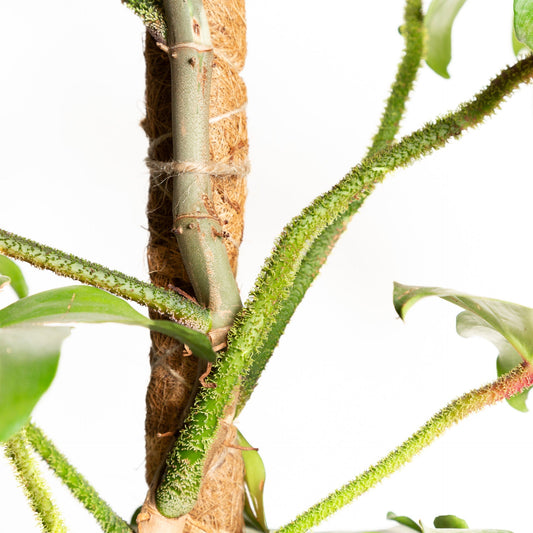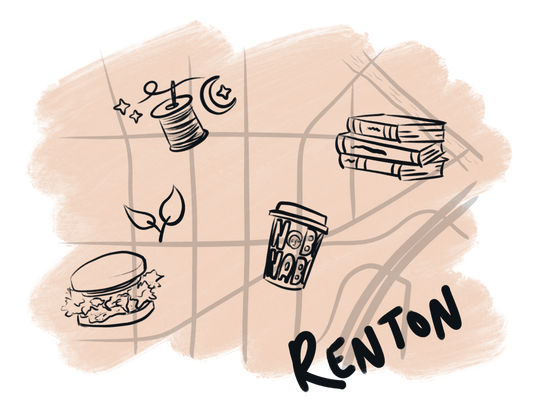If you're just getting started on your plant journey you might be tempted to want to start with small plants. While they have their charm, larger and more established plants can be a wiser choice for beginners. In this article, we'll explore the reasons why starting with bigger plants can make your plant care journey easier and more enjoyable.
More Resilient
Larger plants come with a significant advantage – they have more energy and resources stored up. This means they can withstand stress and adapt to changes in their environment more effectively. For beginners, this extra energy reserve acts as a safety net, offering forgiveness for minor mistakes in care.
Young plants with limited energy reserves are vulnerable to unfavorable conditions. Larger plants, with their well-developed root systems and reserves, can better handle variations in water, light, or temperature. This means you're less likely to see your plant wither away due to occasional lapses in care or while you're learning how to care for them properly.
Tolerant to Environmental Changes
Bigger plants are hardier and less finicky when it comes to changes in their care routine and environment. Young plants often require precise conditions to thrive. Larger plants are more forgiving of moderate changes in light, temperature, and humidity levels. This adaptability allows you to learn and improve your gardening skills gradually, without the constant fear of harming your plant with minor errors.
For instance, if you occasionally forget to water or fertilize, mature plants can handle these changing conditions without immediate signs of distress. This adaptability means you can develop your skills at your own pace without risking the health of your plant.
Longer Visual Warnings
Larger plants provide a significant advantage by showing visual symptoms for an extended period before they get to an unsalvageable tipping point. When something is wrong with your plant, it typically displays warning signs like discolored leaves or stunted growth. This extended warning period gives you time to notice and then respond to issues before they become critical.
Smaller plants can deteriorate rapidly when problems arise, leaving you little time to identify and fix the issue. In contrast, larger plants will generally display symptoms over a more extended period before reaching a critical stage. This extended warning period lets you act proactively to nurse your plant back to health.
For example, if your larger plant is lacking water, it will show signs like drooping leaves, and these symptoms will persist for a longer duration before the plant becomes severely dehydrated. This extra time gives you the chance to correct the problem, whether it's adjusting your watering schedule or improving soil drainage.
Instant Visual Impact
Starting with larger plants offers instant gratification and impact. Young plants can take a long time to reach a size where they make a noticeable difference in your living space while bigger plants already have a substantial presence, instantly giving you that lush look.
The satisfaction of seeing your efforts come to life quickly can be incredibly motivating for beginners. You'll witness the results of your care and attention in a shorter timeframe, boosting your confidence and enthusiasm for new projects and species.
Easier to Learn on
Larger plants can serve as excellent educational tools for beginners. They often have more complex growth patterns, offering a clearer understanding of how different factors like light, water, and nutrients affect plant development. Observing the changes in an established plant over time can help you learn how to care for various plant species and deepen your knowledge.
With larger plants, you have the opportunity to explore advanced techniques like pruning, repotting, and propagating, which are valuable skills for any plant lover. These hands-on experiences will broaden your knowledge and make you a more skilled and confident plant enthusiast.
Less Frequent Maintenance
Surprisingly, larger plants almost always require less maintenance than their smaller counterparts. Larger plants usually live in larger volumes of soil, which take longer to dry out and therefore requires less frequent care. They also tend to take longer before outgrowing their pots, or needing changes in any structural support they might need.
Start on your plant care journey with larger, more established plants can provide numerous advantages, making your experience easier, more enjoyable, and educational. These substantial green companions offer resilience, tolerance to environmental changes, longer warning periods for issues, instant visual impact, and reduced maintenance demands. By choosing larger plants, you not only are you giving yourself some wiggle room while you learn about plant care but also open up a world of botanical exploration and learning that will leave you with a flourishing indoor garden and a wealth of green-thumb expertise. So, why start small when you can make a big, green impact from the very beginning?



